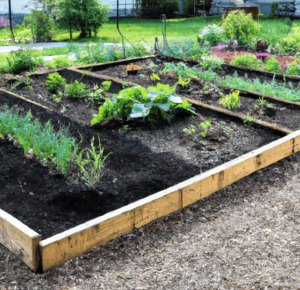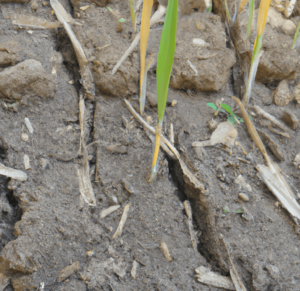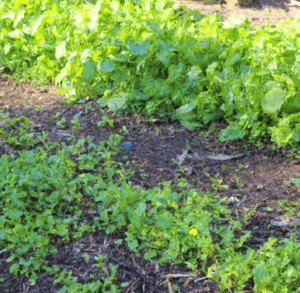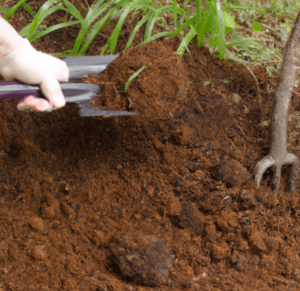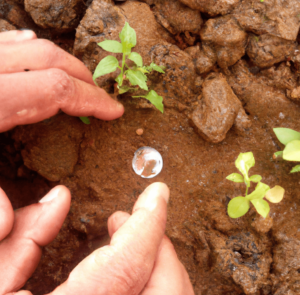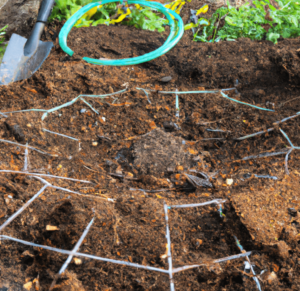The role of soil texture in plant growth is important. The relative amounts of sand, silt, and clay in the soil, in other terms, is soil texture, and it affects soil structure, water-holding capacity, aeration, and nutrient availability. If you’re new to the gardening space or are simply interested in learning more, keep reading this article!
The Effects of Soil Texture on Plant Growth
The ratio of sand, silt, and clay particles in the soil is referred to as its texture. The role of soil texture in plant growth is important because it affects the ability of the soil to hold water and nutrients. Soil texture speaks volumes of its mineral composition as well.
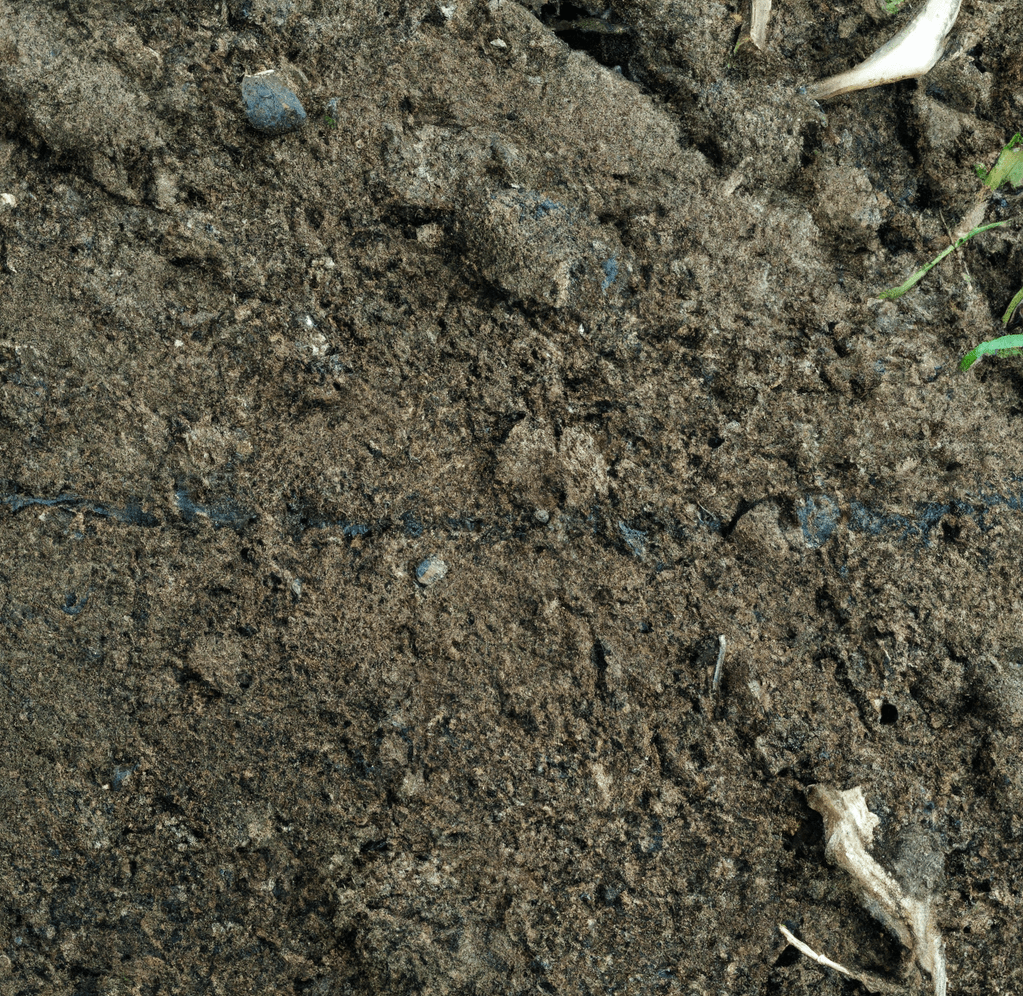
In general, a healthy soil structure allows proper air and water circulation, root penetration, and nutrient absorption which is where fertilizer plays a role. On the other hand, poor soil structure may limit water and nutrient intake, restrict root growth, and worsen soil erosion or degradation.
Sandy Soil: Fast Drainage, Low Water Retention, and Nutrient Leaching
When you’re learning about the role of soil texture in plant growth as a new plant parent, you’ll hear about sandy soil. The quick drainage, low water retention, and strong nutrient leaching characteristics of this soil type are well known.
Large soil particles (e.g., a rock) in sandy soils on land do not store moisture, nutrients, or minerals well, resulting in rapid water drainage and nutrient leaching. As a result, plant roots may not have access to enough water and nutrients, which can hinder their ability to establish and develop in this kind of soil.
Sandy soil also has a restricted capacity to hold onto nutrients and deliver the essential elements for plant growth due to its low organic matter concentration. However, with the right care, measurement, and construction, plants can still flourish in sandy soil despite these difficulties.
Clay Soil: Slow Drainage, High Water Retention, and Nutrient Retention
You’ll also see information on the role of soil texture in plant growth when you look for clay soil. Clay soil is defined by the following characteristics: sluggish drainage, high water, and nutrient retention.
While posing difficulties for gardeners on their properties, these characteristics also make clay soil suitable for growing particular kinds of plants. By incorporating organic matter, such as a compost mixture or peat moss, to promote drainage and aeration, cooperative soil texture can be improved. Due to the slow release of water and nutrients, clay soil is frequently discovered by gardeners to have plants with stronger root systems. However, it’s important not to overwater plants because too much moisture might cause root rot.
Loamy Soil: Balance of Drainage and Water Retention, and Nutrient Retention
When you learn about the role of soil texture in plant growth, loamy soil is highly valued for its special blend of soil texture, organic matter, sand, and clay. This kind of soil provides a harmony between water retention and drainage, allowing for optimal root aeration while also retaining the nutrients that plants require to flourish.
Loamy soil is the best choice for producing a range of plants since it retains moisture and nutrients thanks to the organic matter in the soil. Loamy soil has great drainage due to the sand content, which keeps water from being trapped and leads to root rot. Also, clay in the soil aids in water retention, giving plants a reliable source of hydration. Loamy soil in a garden is a great option for growing a range of plants since it offers the ideal ratio of nutrients, water, and drainage.
The Role of Soil Texture in Plant Growth and Nutrient Availability
The role of soil texture in plant growth is crucial because soil can potentially give plants an area to thrive. The texture of the soil affects both its ability to retain water and its ability to give nutrients to plant roots.
- Fine-textured soils, like clay soils, contain more water and nutrients than soils with a coarser texture, like sand.
- Thick clay soils can also result in water logging and lower soil air quality, which inhibits root growth.
- Sandier soils, on the other hand, drain well but have a limited capacity to hold onto water and nutrients, resulting in a depleted supply of plant roots.
By increasing the soil’s ability to store water and enhancing its structure, organic matter can be added to enhance the soil’s nutrient availability and promote greater root development.
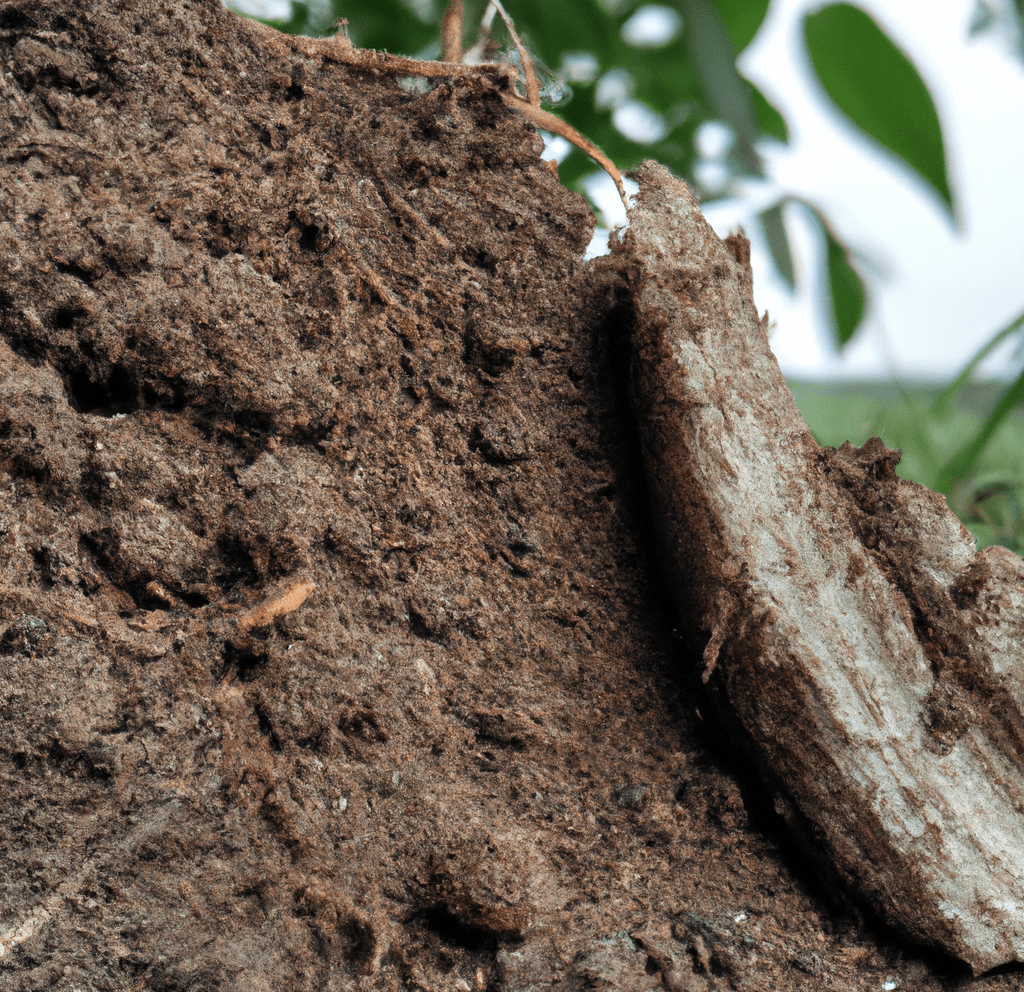
How Soil Texture Affects Nutrient Uptake in Plants
The relative amounts of sand, silt, and clay in soil are referred to as its texture, and these proportions have an impact on the soil’s ability to hold water, breathe, and retain nutrients. An optimum environment for plant growth is provided by soil that has a texture that is balanced and contains a combination of sand, silt, and clay particles.
Although sandy soil has a high permeability that allows for optimal aeration, it has a low capacity to hold water and nutrients. Conversely, clay soils have poor aeration but high water retention and nutrient retaining capacity, making it challenging for roots to absorb nutrients.
On the other hand, silty soils offer a balanced ratio of water-holding capacity and aeration, making them an ideal setting for plant development. In conclusion, the availability and uptake of nutrients by plants are significantly influenced by the texture of the soil. For optimum plant growth and development, the soil must have an even texture and structure.
The Role of pH and Organic Matter in Relation to Soil Texture
The physical and chemical characteristics of soil are important in the role of soil texture in plant growth. Particularly, its pH value and organic matter concentration are significantly influenced by its composition.
- Plants’ capacity to absorb vital nutrients from soil is directly impacted by the pH level of the soil. Poor plant development can result from soil that is either excessively acidic or too alkaline, which prevents nutrients from being absorbed.
- Soil pH has an impact on soil microbial activity, which is crucial for the breakdown of organic materials in fertilizer or helpful organisms.
- The texture of the soil is also greatly influenced by organic materials. It helps strengthen the soil’s structure and increases the soil’s ability to hold water. The decomposition of plant and animal matter results in the formation of organic matter, which can serve to improve soil structure and boost soil fertility.
In general, soils with a larger proportion of clay tend to have a higher organic matter content than soils with a higher proportion of sand. Understanding the interactions between soil pH, soil texture, and organic matter is crucial for effective soil management and crop productivity since these elements interact in a complicated way.
Managing Soil Texture for Optimal Plant Growth
When learning about the role of soil texture in plant growth, you’ll want to learn about how to make sure the earth is managed well. For example, the importance of soil moisture in gardening is intertwined proper balancing of soil constituents including sand, silt, and clay that can enhance root growth. Other tips for managing soil texture include:
- Water: Water can permeate and be absorbed by the roots of soil with a good texture, giving the plant a sufficient amount of water. On the other side, soil that is overly compacted or dense might stop water from getting to the roots, causing plants to become dry and stressed.
- Plant roots: The soil is kept from becoming overly compacted or dense by the roots’ assistance in aerating it. They also aid in the breakdown of organic debris, which enhances soil quality and gives plants vital nutrients.
- Soil quality: Healthy plant growth will be supported by soil that is high in organic matter, has a pH that is balanced and contains enough nutrients. By allowing water and nutrients to reach the roots, reducing soil erosion and compaction, and encouraging healthy root growth, the correct soil texture will also enhance quality.
Managing soil texture is crucial for achieving the best plant development and productivity.
Techniques for Improving Soil Texture, Such As Adding Organic Matter and Adjusting pH
You can learn more about the role of soil texture in plant growth and use different techniques that result in higher plant development. The addition of organic matter and pH adjustment are two efficient methods for enhancing soil texture.
Compost, mulch, or well-rotted manure are organic materials that can be added to the soil to help with soil improvement. By acting like a sponge, this organic material holds onto moisture and nutrients that would otherwise be lost. Also, it helps enhance the soil’s capacity for efficient drainage, lowering the danger of waterlogging and root rot. Improve soil texture by bringing the pH of the soil to the ideal range for the plants you want to grow.
The Use of Mulch and Cover Crops to Improve Soil Texture
When learning about the role of soil texture in plant growth, you can use mulch and cover crops to foster a healthy soil structure:
- Mulch, a layer of organic material applied to the top of the soil, aids in soil nutrient and water retention. Additionally, it can aid to strengthen the soil’s structure and manage weeds.
- Cover crops are plants that are grown expressly to enhance soil health. As they degrade, they enrich the soil with organic matter and prevent erosion. In addition, cover crops aid in controlling the availability of nutrients and water, which can enhance soil structure and promote better plant growth.
These techniques can increase overall soil health and support a vibrant, healthy ecosystem.
Bottom Line: The Role of Soil Texture in Plant Growth
The role of soil texture in plant growth is an important one. The relationship between soil texture, water content, and nutrient availability in the soil, as well as how these factors impact plant growth, has been discussed above.
This knowledge can be utilized to create irrigation and fertilizer techniques that are more efficient, increasing crop yields and ensuring the food security of expanding populations.
Despite how crucial soil texture is, there is still much to understand about how it affects plant development like whether or not the same soil will still reap the benefits of using raised beds in gardening or how a specific climate plays a role. Until there’s more research in agriculture and related fields, keep our tips in mind and explore our website on related topics!
In general, the health and development of plants are greatly influenced by the texture of the soil. For the sustainable management of our natural resources and the continuous supply of food for a growing world population, a better understanding of the science of soil as a concept and its applications is needed.
FAQs on The Role of Soil Texture in Plant Growth
What is the role of soil texture in plant growth?
The relative proportions of sand, silt, and clay in the soil, in other terms, is soil texture, and it has an impact on soil structure, water-holding capacity, aeration, and nutrient availability. For adequate air and water circulation, root penetration, and nutrient absorption, a healthy soil structure is essential.
What properties do sandy soils have?
Sandy soil has significant nutrient-leaching properties, quick drainage, and minimal water retention. In sandy soil, the big soil particles can not effectively retain moisture or nutrients, which might impede plant growth. Plants can, however, nevertheless flourish in sandy soil if they are properly cared for and managed.
What qualities do clay soils have?
Clay soil retains water and nutrients well while having slow drainage. These qualities make clay soil appropriate for growing some plants, but gardeners must add organic matter to increase drainage and aeration. In clay soil, overwatering can result in root rot.
What distinguishes loamy soil from other types?
For its balance of water retention and drainage as well as its combination of soil texture, organic matter, sand, and clay, loamy soil is highly prized. Given that it offers the finest balance of nutrients, water, and drainage, loamy soil is the best choice for growing a variety of plants.
What are the different individual types of soil textures?
While clay soil has poor aeration but high water retention and nutrient retaining capacity, sandy soil has great permeability but limited capacity to hold water and nutrients. Silty soil provides a balanced ratio of aeration to water-holding capacity, which makes it the perfect environment for plant growth.
How does plant nutrient uptake depend on soil texture?
The availability and uptake of nutrients by plants are influenced by the soil’s texture, which also impacts the soil’s capacity to store water, breathe, and retain nutrients. The best soil texture for planting and development is one that is balanced and even whether you’re a farmer or a gardening enthusiast.
How can pH and organic matter affect the texture of the soil?
When considering the impact of soil texture on plant growth, it is crucial to consider how the pH level and amount of organic matter in the soil are affected by its composition. Organic matter can improve the availability of nutrients in the soil and encourage increased root development by improving the soil’s structure and capacity to store water.


